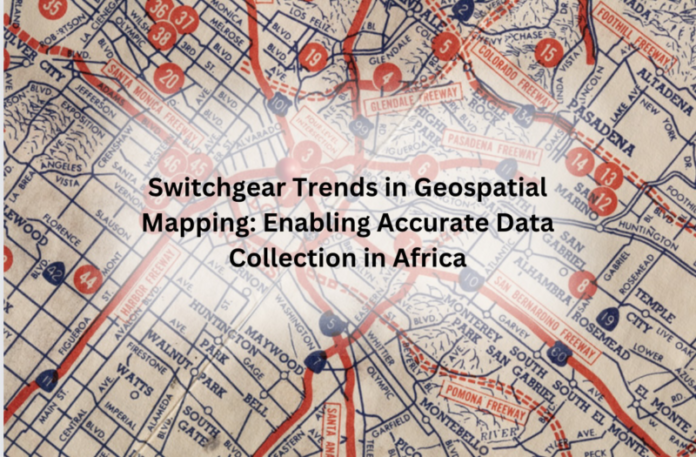In the field of electrical infrastructure, the union of cutting-edge switchgear advances and geospatial mapping is reshaping the scene of data collection across Africa. This vital cooperative energy improves the effectiveness of electrical frameworks and assumes an urgent part in addressing provokes exceptional to the continent. At the core of this mechanical development lie modern electrical instruments that work with exact monitoring and control, ushering in a period of unwavering quality and sustainability.
Geospatial mapping, the most common way of utilizing geographic information to envision, dissect, and interpret spatial connections, has found a vital partner in present-day switchgear frameworks. These frameworks, intended to control, secure, and disconnect electrical hardware, are undergoing a groundbreaking development, integrating geospatial mapping to make a complete outline of the electrical infrastructure in Africa.
Benefits of Geospatial Mapping
-
Detect issues/problems
One of the vital benefits of this integration is the capacity to recognize and find possible issues in the electrical framework quickly. By employing geospatial mapping methods, administrators can pinpoint flaws or disturbances continuously, altogether reducing free time and minimizing the effect of electrical blackouts. This is especially critical for Africa, where solid admittance to power is a test in numerous districts.
Electrical instruments implanted in cutting-edge switchgear frameworks are essential in this cycle. These instruments, furnished with sensors and monitoring abilities, give primary data on the presentation of electrical components. Via consistently integrating this data into geospatial maps, administrators gain a complete understanding of the whole electrical organization, enabling proactive maintenance and quick reaction to emerging issues.
The electrical instruments turn into the linchpin in this mechanical advancement. These instruments include many gadgets, from cutting-edge sensors measuring voltage and current to intelligent transfers that can independently distinguish oddities and trigger defensive activities. The collaboration between electrical devices and geospatial mapping guarantees that the data gathered isn’t just accurate and significant.
-
Cater to the Growing needs of the Population
Regarding Africa, where different and frequently challenging terrains present novel impediments to maintaining electrical infrastructure, the job of geospatial mapping turns out to be considerably more articulated. Through satellite symbolism, robots, and ground-based studies, accurate topographical data is gathered and integrated with the electrical matrix information. This combination gives a comprehensive view that guides in planning, optimizing, and expanding the electrical infrastructure to satisfy the growing needs of the populace.
-
Carry Preventative measures
Besides, integrating geospatial mapping with switchgear frameworks adds to the general unwavering quality of the electrical lattice. Africa encounters different ecological circumstances, from outrageous temperatures to heavy rainfall, which can influence the exhibition of electrical hardware. By utilizing geospatial data to foresee expected weaknesses, administrators can carry out preventive measures and upgrade the versatility of the electrical infrastructure.
-
Effectiveness and Sustainability
The advantages stretch out past dependability, encompassing effectiveness and sustainability. Geospatial mapping considers improving electrical matrix designs, ensuring energy is dispersed with minimal misfortunes. Furthermore, by leveraging accurate data on energy utilization designs, leaders can execute designated procedures for improving energy productivity and reducing waste.
Chasing sustainability by integrating environmentally friendly power sources into the electrical matrix is a crucial thought. Geospatial mapping is vital in identifying ideal areas for sun-powered and wind ranches, considering variables, for example, daylight openness and wind designs. Electrical instruments, through exact monitoring and control, consistently integrate environmentally friendly power into the existing lattice, fostering a more sustainable and eco-accommodating energy scene.
As Africa continues its quick urbanization and monetary turn of events, the interest in solid and open power escalates. The marriage of switchgear innovations with geospatial mapping, driven by cutting-edge electrical instruments, arises as a groundbreaking answer for meeting these growing energy needs. The capacity to accurately gather and break down data empowers partners to pursue informed choices, plan for the future, and guarantee that electrical infrastructure isn’t simply a utility but an impetus for progress.
Conclusion
In Conclusion, integrating geospatial mapping and switchgear innovations controlled by cutting-edge electrical instruments denotes a huge jump forward in the domain of electrical infrastructure in Africa. This collaboration tends to the continent’s extraordinary difficulties, providing a pathway to solid, effective, and sustainable energy frameworks. As we embrace these innovative trends, we are ready for a more splendid and more electric future for Africa.



